How To Repair A Water Main Break
Water main breaks
Providing a rubber, reliable source of drinking water to our customers is important to us. When a water main breaks, it can exist disruptive to local traffic, pedestrians and our water customers - who count on a reliable supply of tap water. This web folio explains why breaks happen, how our crews reply, what proactive steps we accept to forbid them, and what you lot tin exercise to reduce the affect of these service disruptions.
Did you know, beingness prepared is the all-time matter you can do to reduce the impact of a h2o service disruption? Take these steps:
- The City of Kingston emergency management plan suggests that each household has at the ready four litres of h2o, per person, per twenty-four hours for drinking and bathing.
- Know the number to call: study potential water chief breaks and other utility emergencies to united states past calling our
24 hour line at 613-546-1181. - Stay informed: you can keep up-to-engagement with service disruptions past following Utilities Kingston on Twitter and Facebook, or by checking http://world wide web.utilitieskingston.com.
- Every basement is inherently at take a chance of flooding, and information technology can happen for many reasons, including h2o main breaks. Learn how to protect your abode from basement flooding.
Why breaks happen
Utilities Kingston maintains 560 kilometres of municipally-endemic water master, ranging in size from 150 to one,200 millimetres. Depending on the decade when they were installed, these pipes may be made of metallic or plastic materials.
Materials and installation
Over time, cracks tin form, allowing water to leak out of the pipage. Cracks tin develop for a number of reasons such as corrosion and fabric defects.
H2o chief breaks most often occur on crumbling infrastructure. For example, they're more probable to happen on older corrosive materials, such as bandage iron, and with more traditional installation techniques. For instance, pipes that are laid on wooden blocks or resting on rocks have a higher adventure of failure.
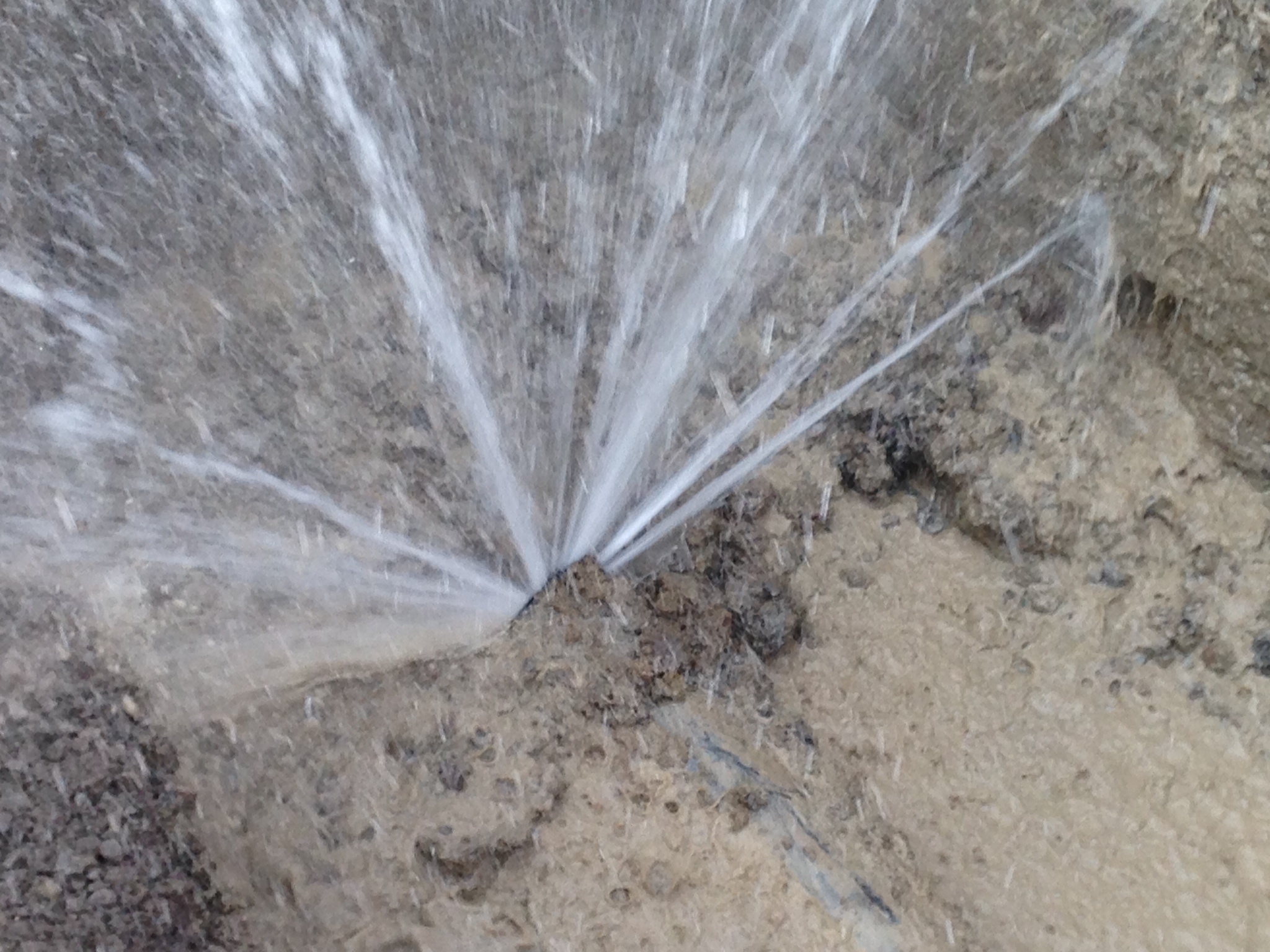
Water sprays from a
circumferential break on a
half-dozen inch cast iron pipe
More than recently, the industry has advanced the materials and installation practices used, and so it'south less of an issue with newer infrastructure.
Cold weather condition
Conditions is besides a big factor impacting h2o principal breaks. Deep frost and freeze-thaw cycles can aggrandize and contract materials, thereby stressing the pipes and causing cracks.
In 2022, we experienced a tough, common cold winter. Weather factors influenced a larger than usual number of breaks. Crews responded to 50 leaks/breaks, compared to 38 the year before.
Type of breaks
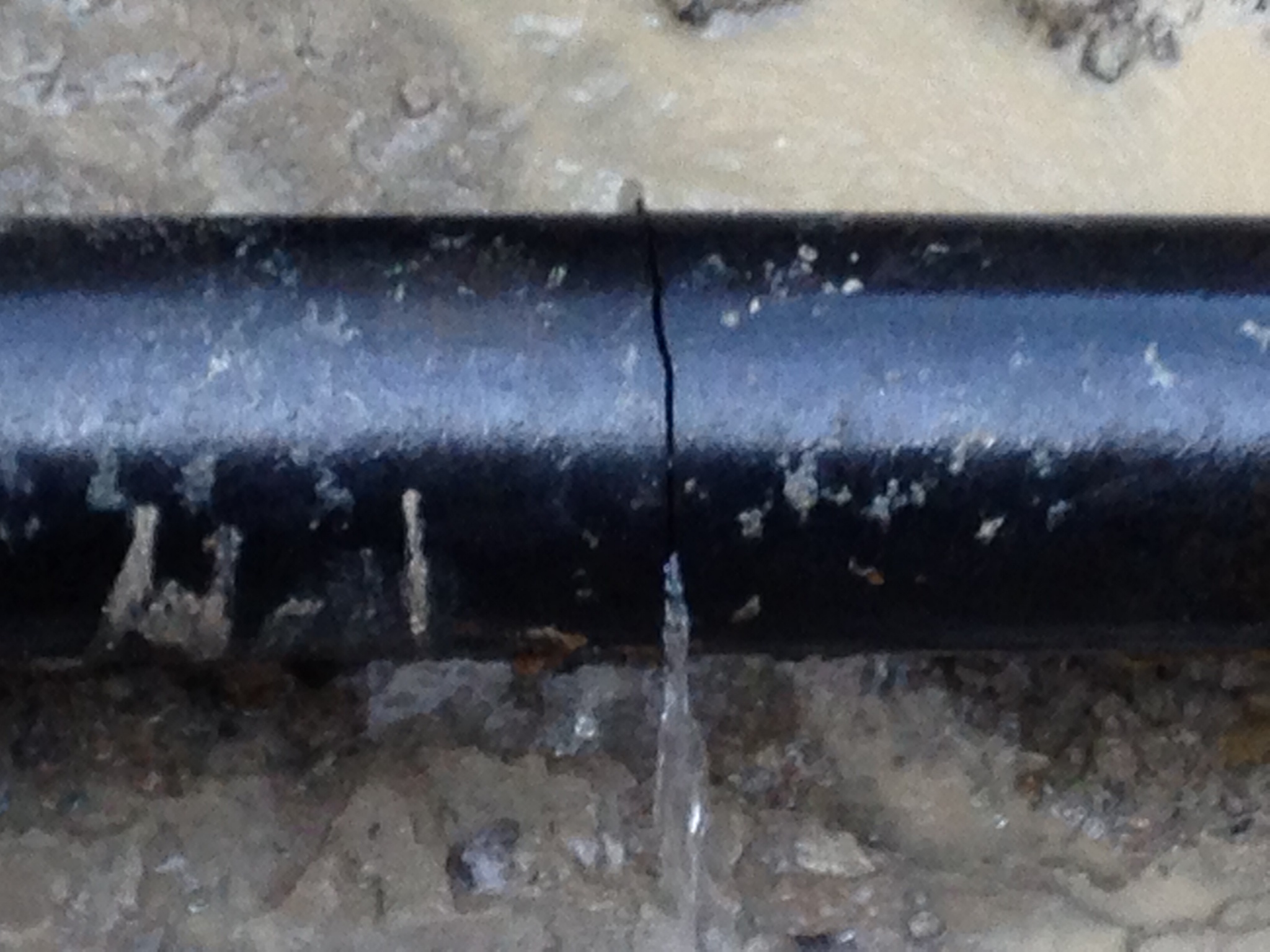
Circumferential cracks typically happen due to older styles of bedding materials such as large rocks and pieces of timber
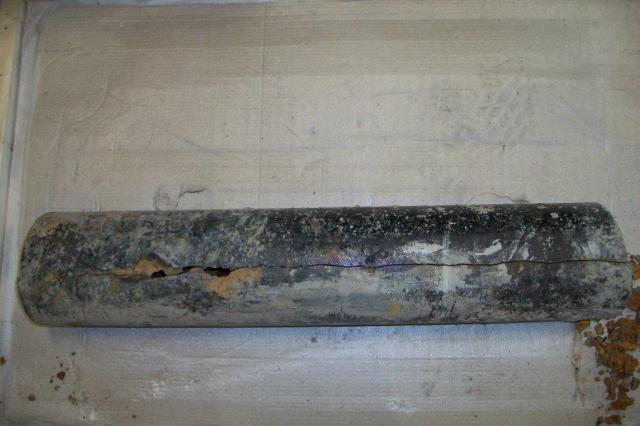
Longitudinal cracks may occur because the pipe is stressed by angle
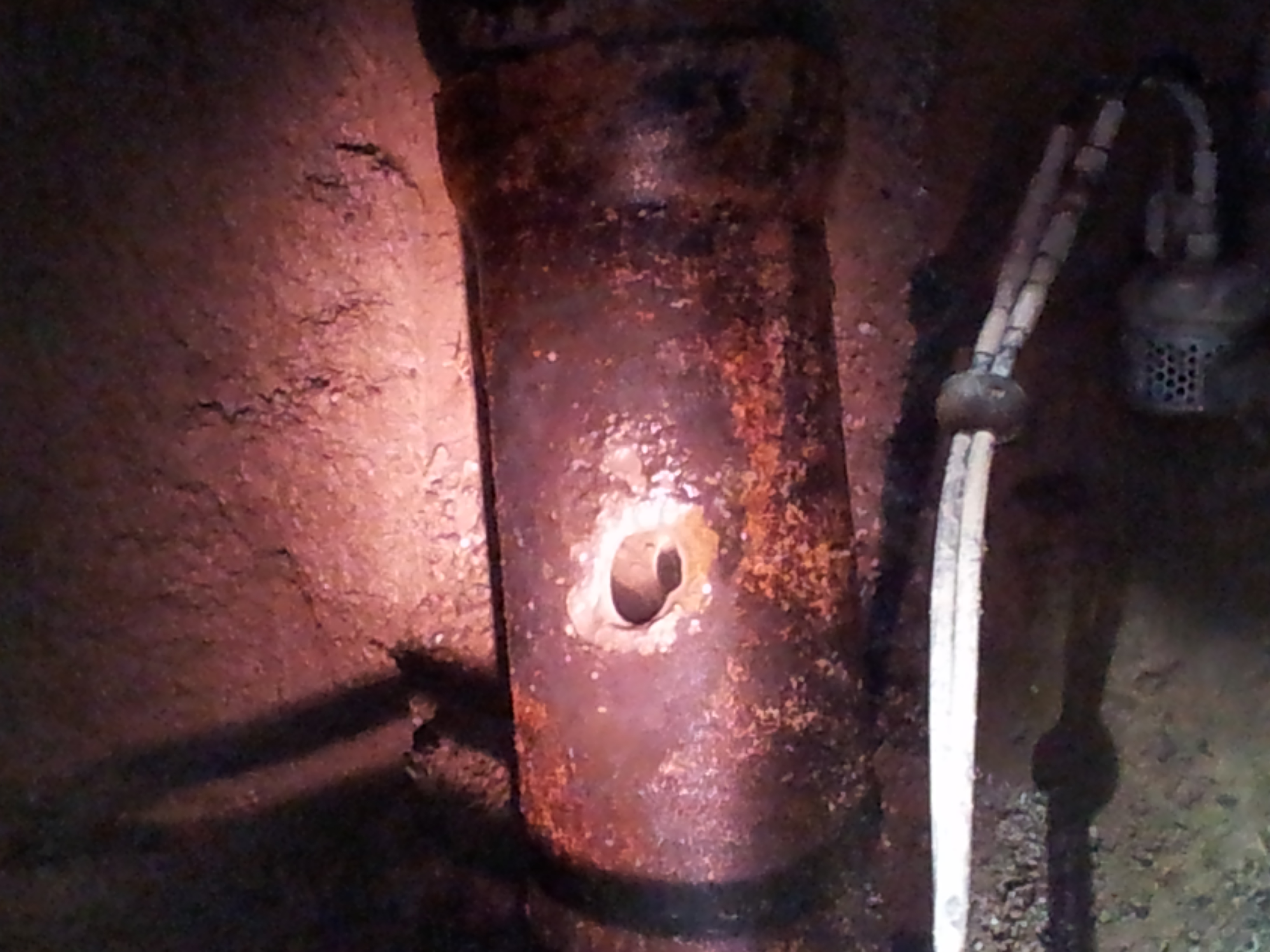
Corrosion holes tin be internal or external to the pipe, or both
Preventing breaks
Through proactive infrastructure renewal programs, Utilities Kingston identifies priority areas and takes steps to responsibly renew aging infrastructure. Over the last five years, Utilities Kingston has completed the following work to help ensure the continued reliability of municipal infrastructure:
- Replaced over xx kilometres of cast-iron water mains with tough new plastic pipes less prone to leaks and bursts.
- Structurally relined xx kilometres of water main to create a tough new "pipe-within-a -pipe" (see sample shown at right) that ensures the reliability of the pipage for up to l additional years.
While we practise our best to stop breaks from happening in the offset identify, they can't always be prevented. Read on to learn how we respond to the site of a water master interruption.
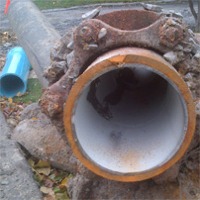
Repairing a break
We recognize that information technology can be a lengthy, confusing procedure to safely and finer repair a h2o main pause. We appreciate our customers, who are typically very patient and understanding.
Here's what'due south involved:
Usually, the call comes into our control centre. Operators determine the priority of the leak and acceleration water distribution crews also as an hush-hush utility locator.
Securing the site
The area is made safe, traffic control is ready, and whatever high traffic areas at risk of icing are salted and sanded.
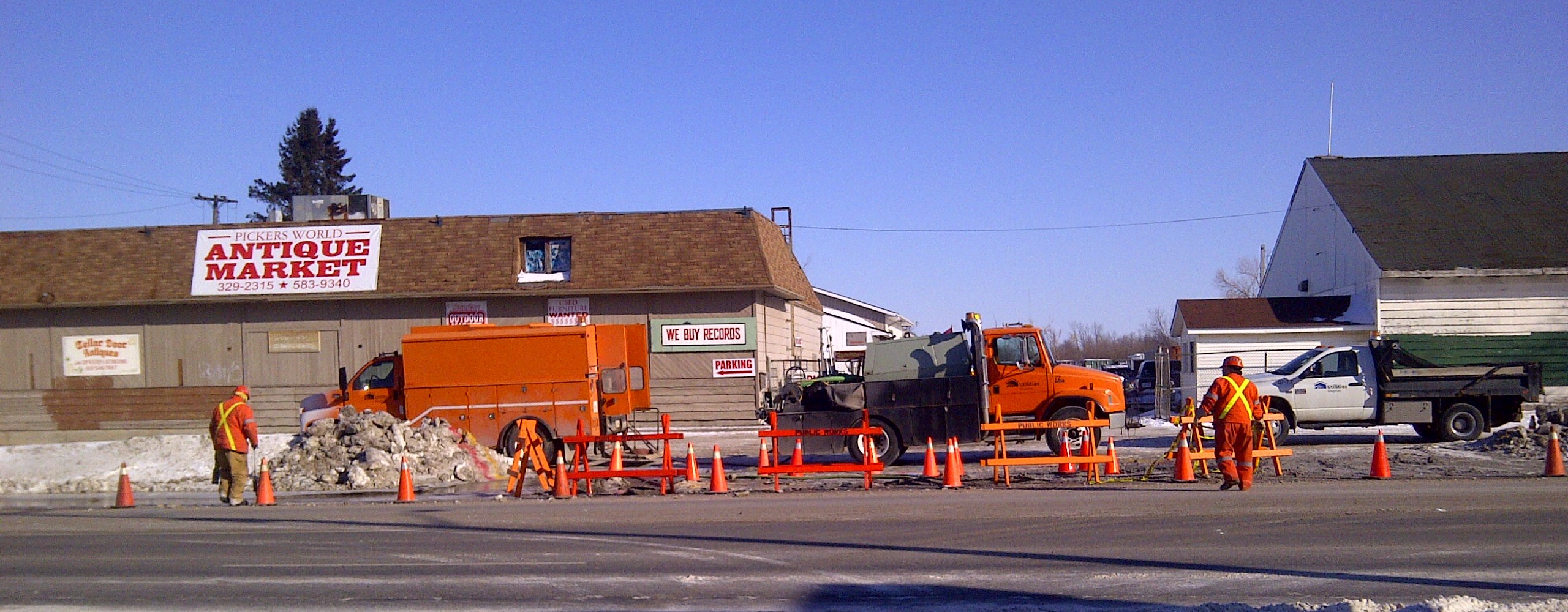
Regulated traffic control set ups help protect the safety of our employees, the public and utility infrastructure
Utility locators attend the site to locate hole-and-corner h2o, sewer, gas, electricity and telecom infrastructure. They marker the location of infrastructure to prevent excavators from hitting and damaging this equipment.
This step of the process tin be time consuming. Depending on the geographical location of the break, it's necessary for up to 5 utility companies to complete their locates.
Finding the leak and isolating the pipage
Pin-pointing the exact location of the intermission can involve visual inspection, listening with correlating equipment, and excavating.
Once the source of the leak is found, crews work with control centre operators to determine the all-time way to isolate the pipe from the system, and so that h2o tin be shut off while impacting the fewest number of customers possible. Crews operate valves to isolate the pipage and close the water off. They'll also make every effort to allow our customers know that the h2o will be off, past going door-to-door and speaking to residents personally, where viable.
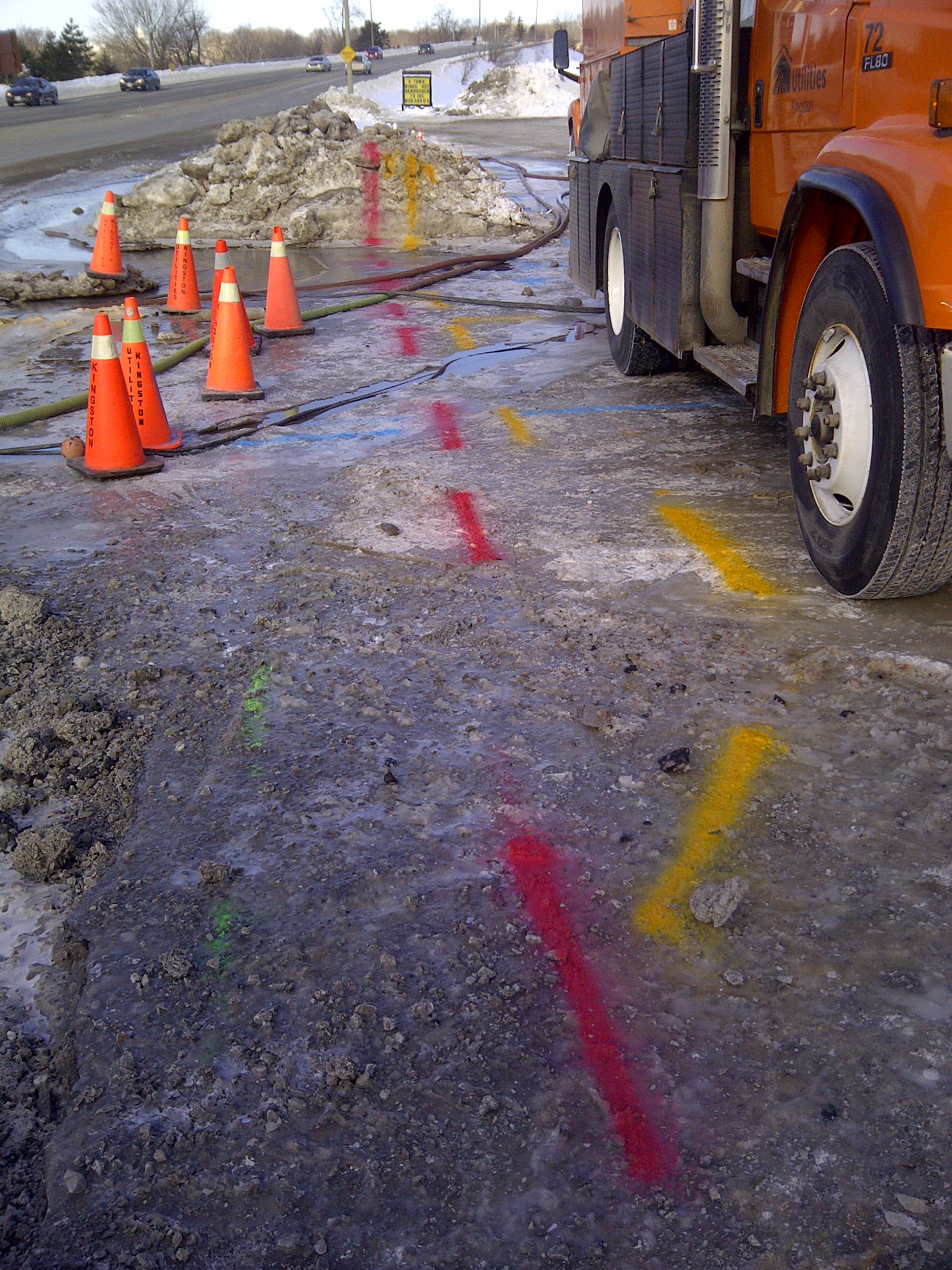
This film captures the location of water (bluish), sewer (light-green), gas (xanthous) and electric (red) underground infrastructure
Repairing the pipe and restoring water services
One time the intermission is exposed, crews repair it. This step of the process involves several challenges including:
- Adverse conditions conditions, as breaks oftentimes happen during farthermost cold.
- The proximity of underground sewer, gas and electricity infrastructure.
- Ensuring employee health and safety, peculiarly considering breaks often happen at night, in the coldest temperatures.
In this case, a stainless steel clamp is used to repair a circumferential crack on a six inch cast iron piping.
Once the repair is complete, we'll make full the pigsty and plan for restoration. Before the water is turned back on, the pipes are flushed with chlorine to ensure a loftier level of drinking h2o. The water is tested to ensure it is rubber.
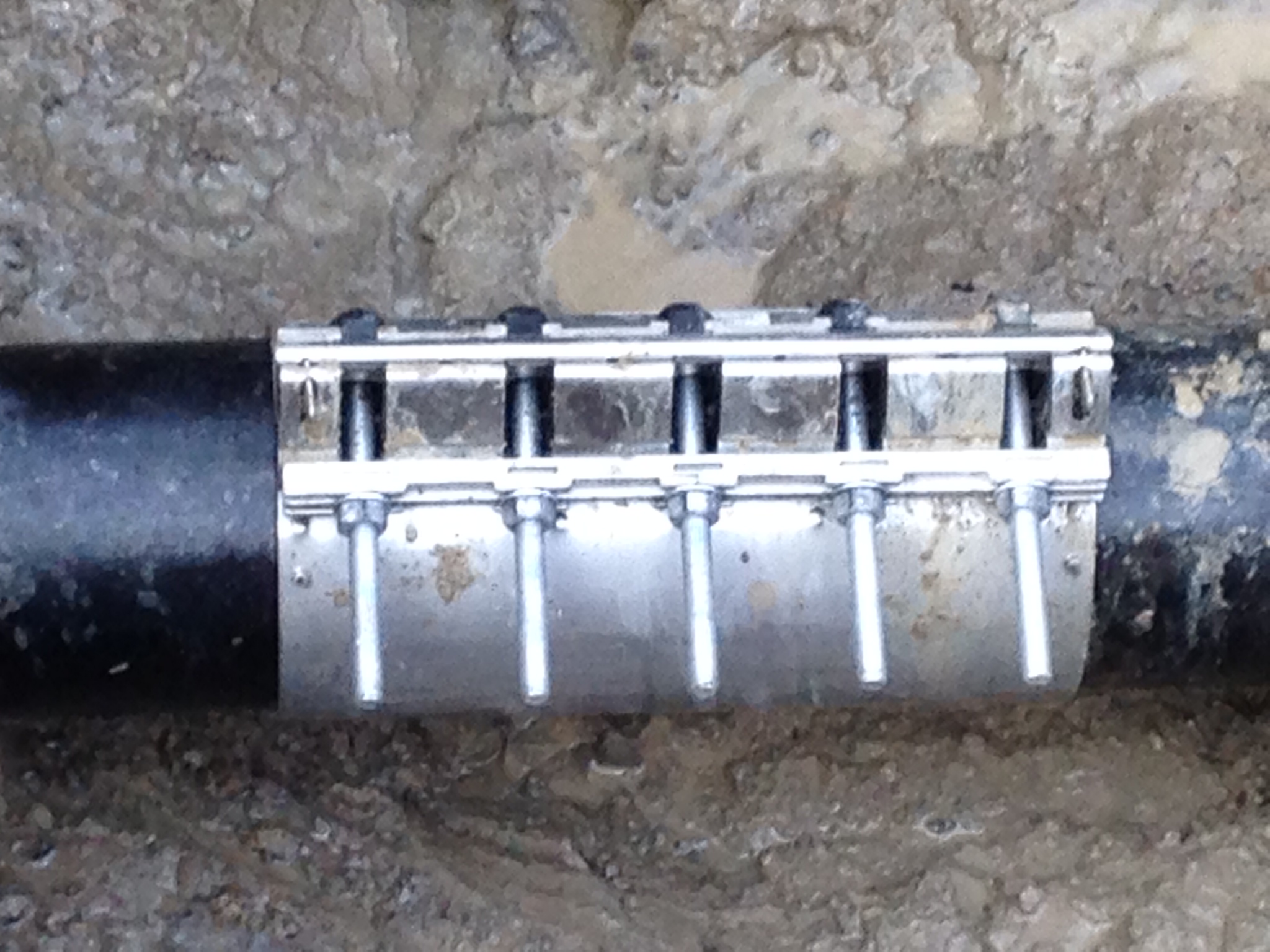
We actually appreciate the efforts of our crews, who often work overnight in sub-zero temperatures to aid ensure a reliable supply of water for the residuum of u.s.. Thank you!
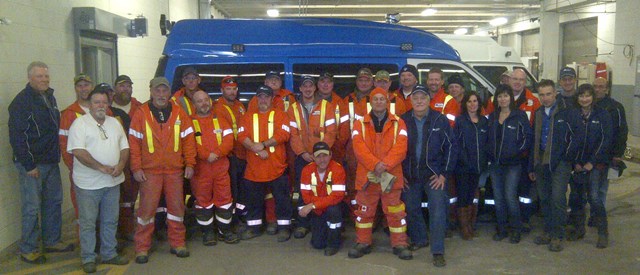
Once your water is turned back on, you might notice the tap water is discoloured. This is normal, as work on the distribution system can disturb deposits in the pipes. The water is safety, just flush your cold water tap until it clears.
Meanwhile, in the control eye
While the work on the side of the route is highly visible, the backside-the-scenes work in the control heart is less so, only only as important. To assist with water primary breaks, control centre operators:
- Take client calls that come into dispatch.
- Help organize crews and utility locators.
- Log the performance of hydrants and valves.
- Coordinate with municipal services including transit, fire and constabulary.
- Aid communicate to the public past issuing social media updates, updating the automated vox recordings and sending information to municipal groups.
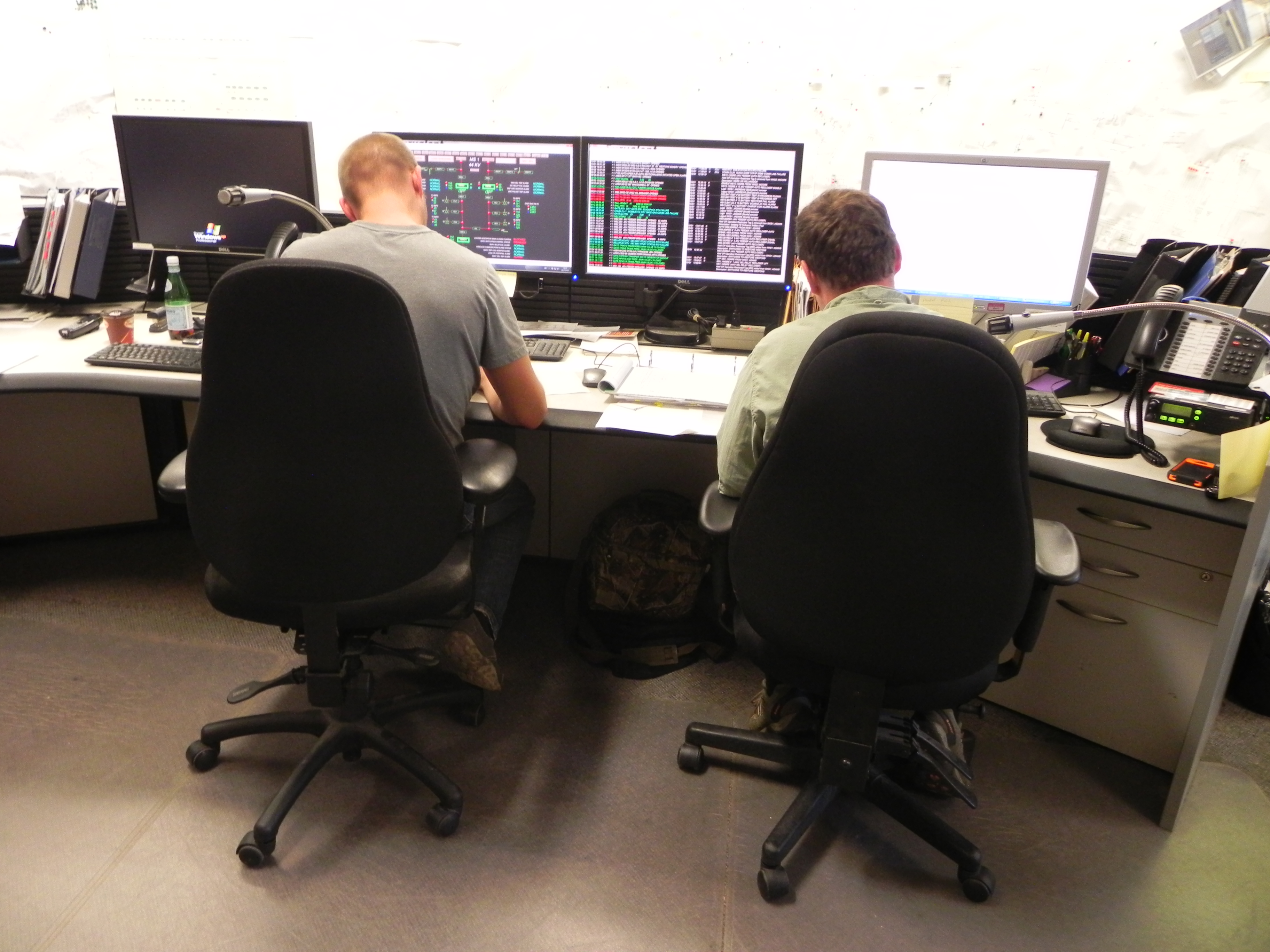
Report a potential water main interruption
Typical signs that in that location might be a h2o principal break in your surface area include:
- Water bubbling up from the footing and running downward the side of your street.
- Your sump pump is constantly running.
- Reduced or depression water force per unit area.
- Noise or vibration at the individual water service. Heed here to an audio file of the noise you might hear.
If y'all retrieve there's a h2o chief break, please report it by calling our 24 hour line at 613-546-1181, and thank you for helping.
Avert driving through flooded areas:
- Avoid driving through puddles every bit they can hide a pothole that could damage your vehicle or its suspension, or flatten a tire. The spray of water could obstruct the vision of adjacent motorists and result in a collision, crusade harm to nearby pedestrians or drown your engine, causing it to stall. Water can also make your brakes less constructive.
- Avoid driving on flooded roads, water may prevent your brakes from working. If you must drive through a flooded stretch of road, test your brakes afterwards to dry them out. Test your brakes when it is safe to do and then by stopping speedily and firmly at 50 km/h. Brand sure the vehicle stops in a straight line, without pulling to one side. The restriction pedal should feel firm and secure, non spongy, that's a sign of trouble. If you still feel a pulling to one side or a spongy restriction pedal even later on the brakes are dry, y'all should have the vehicle in for repair immediately.
- Obey road closures and signs and using appropriate detour routes.
- Go more than information from the Ministry of Transportation.
Source: https://utilitieskingston.com/Water/mainbreaks
Posted by: broderickperney.blogspot.com


0 Response to "How To Repair A Water Main Break"
Post a Comment